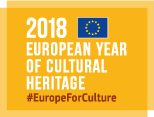Heritage and Threat - HeAT: A Typology of Threat to Heritage

Challenge: WHY the innovation has been developed? What problem is addressed and why has not been not solved before?
Understanding and addressing threats facing cultural heritage is key to enable policy-makers intervention and increase protection of cultural heritage at risk. Yet, a dearth of systematic information and understanding about this broad palette of threats, still constitutes an obstacle and a limit for governments and institutions. Crisis evaluation and post-conflict reconciliation are effective only if threats to cultural heritage are analysed in a context of understanding of the intrinsic and embedded values embodied by the heritage for the local and international communities. Such approach requires a careful identification of the mechanisms possibly leading to threats.
Solution: WHAT the solution is about? HOW it goes beyond the state of the art?
The HeAT project has developed a systematic approach to analyse threats and processes leading to destruction of cultural heritage to help policy makers develop effective strategies.
End-users and examples of uses: WHO will beneficiate/ is beneficiating from the solution? WHERE and HOW the solution has been adopted? How will impact people or end-users? Add as more as possible examples of market and society uptakes
The HeAT project has sought to address the gaps through a systematic analysis of threats across different geo-cultural locations achieving a sophisticated cross-cultural typology of threat. A web-based platform to better understand and visualise the destruction of cultural landscapes via map overlays was developed, accompanied by a handbook for governmental bodies, global organisations, NGOs and peace-keeping forces. Achieving a deeper understanding of processes leading to destruction of cultural heritage is key to help policy makers develop more proactive strategies.
Future possibilities: Future market perspectives when the innovation will be fully available or in use
In order to increase the awareness and appreciation of good heritage management among end-users, a travelling exhibition has taken place in 20 different locations in Denmark: 'The Street Show'. The typology will also be distributed as epub and printed copy to decision makers, researchers and the interested public.
References for more information (eg. website, social media)
Contacts:
Ingolf Thuesen (it@hum.ku.dk)
Moritz Kinzel (zdr147@hum.ku.dk)
Application sectors:
- Historical sites
- Circular models for CH
- Heritage communities and participatory approach
- Risk management
- Cultural diplomacy and policy
- Intercultural dialogue
Objectives:
- Consumers’ awareness and information, trust building
- Supporting strategies, regulatory frameworks legislation and standards at EU and national levels
- Regional/Local development
- Knowledge sharing and education
RRI Dimensions:
- Public Engagement
- Science Education
- Open Access
Communities:
- Heritage at risk
- Shared management of cultural heritage

